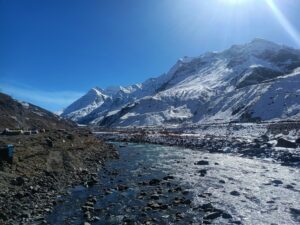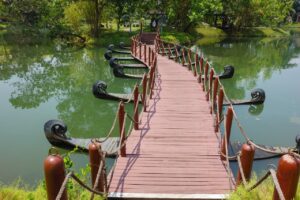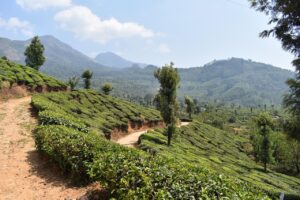India, with its vast and varied landscapes, offers a treasure trove of adventure for outdoor enthusiasts. From the mighty Himalayas to the lush Western Ghats and the rugged terrain of the Northeast, trekking & hiking tourism in India has grown exponentially in recent years. This form of tourism appeals not only to adrenaline junkies but also to nature lovers, spiritual seekers, and cultural explorers looking for authentic and immersive travel experiences.
Whether you’re a seasoned trekker seeking high-altitude challenges or a beginner looking for scenic nature trails, trekking & hiking tourism in India promises unforgettable experiences in some of the world’s most stunning and serene landscapes.
Why Choose Trekking & Hiking Tourism?
Unlike traditional sightseeing, trekking and hiking allow you to connect deeply with nature and local communities. It’s a sustainable form of tourism that minimizes environmental impact while offering rich, slow-paced travel. Here are a few reasons why trekking and hiking are growing in popularity:
- Offbeat Adventures: Get away from the crowds and explore remote, unspoiled regions.
- Health Benefits: A great way to stay fit while traveling.
- Cultural Immersion: Many trails pass through local villages, offering insight into unique traditions and lifestyles.
- Eco-Friendly Travel: Lower carbon footprint than conventional tourism.
Top Trekking & Hiking Destinations in India
1. Himachal Pradesh
- Triund Trek (McLeodganj): A short yet scenic trail ideal for beginners, offering panoramic views of the Dhauladhar range.
- Hampta Pass Trek: A moderate-level trek that crosses high-altitude passes and alpine meadows, ending in the arid Spiti Valley.
- Bhrigu Lake Trek: Popular for its high-altitude glacial lake surrounded by snow-capped peaks.
2. Uttarakhand
- Valley of Flowers & Hemkund Sahib Trek: A UNESCO World Heritage Site known for its vibrant alpine flora.
- Kedarkantha Trek: A favorite winter trek with snow trails, dense forests, and stunning summit views.
- Roopkund Trek: Famous for the mysterious skeletal lake at over 15,000 feet (currently regulated for ecological reasons).
3. Ladakh & Jammu-Kashmir
- Chadar Trek (Frozen River): A winter trek across the frozen Zanskar River — challenging and otherworldly.
- Markha Valley Trek: Takes you through traditional Ladakhi villages, monasteries, and high-altitude deserts.
- Tarsar Marsar Trek: Scenic alpine lakes, meadows, and fewer crowds make this one of Kashmir’s best-kept secrets.
4. Sikkim & Northeast India
- Goechala Trek (Sikkim): Offers views of Mt. Kanchenjunga, the world’s third-highest peak.
- Dzukou Valley Trek (Nagaland): Known for its lush green valleys, flowers, and solitude.
- Sandakphu Trek (West Bengal/Sikkim border): The only place to see views of four of the five highest peaks — Everest, Kanchenjunga, Lhotse, and Makalu.
5. Western Ghats & South India
- Kudremukh Trek (Karnataka): Ideal for lush green rolling hills and misty landscapes.
- Chembra Peak Trek (Kerala): Famous for the heart-shaped lake en route to the summit.
- Meesapulimala Trek (Tamil Nadu/Kerala): A UNESCO protected biosphere offering high-altitude grasslands and rich biodiversity.
Types of Trekking & Hiking Tourism Packages
1. Beginner-Friendly Treks
Short-duration hikes with low elevation gain, suitable for families and new trekkers. Examples: Triund, Nag Tibba, and Rajmachi Fort.
2. High-Altitude Expeditions
Designed for experienced trekkers, these involve longer durations, acclimatization schedules, and professional support. Examples: Stok Kangri, Pin Parvati Pass, and Chadar Trek.
3. Cultural and Spiritual Treks
These treks combine adventure with religious significance — like the Kailash Mansarovar Yatra, Amarnath Yatra, or the Tungnath-Chandrashila route.
4. Eco & Sustainable Treks
Focus on conservation, local employment, and minimal ecological impact. Many operators offer community-led trekking experiences.
Best Time for Trekking & Hiking in India
- Summer (April to June): Ideal for most Himalayan treks as snow starts to melt.
- Monsoon (July to September): Perfect for treks in Ladakh and the Western Ghats.
- Autumn (September to November): Post-monsoon treks offer clearer skies and vibrant landscapes.
- Winter (December to February): Suitable for snow treks like Kedarkantha and Dayara Bugyal.
Essential Tips for Trekkers
- Acclimatize Gradually: Especially important for high-altitude treks to avoid AMS (Acute Mountain Sickness).
- Pack Smart: Include layers, rain gear, water bottles, sunscreen, first-aid, and energy snacks.
- Hire Local Guides: They ensure safety and enrich your experience with local stories and knowledge.
- Respect Nature: Follow Leave No Trace principles. Do not litter, disturb wildlife, or damage trails.
- Check Permits: Some regions require inner line or special permits — often included in trekking packages.
Conclusion
Trekking & hiking tourism in India is not just about conquering peaks — it’s about discovering yourself, forging connections with nature, and embracing the unpredictable beauty of the wild. Whether you’re walking past blooming rhododendron forests, crossing icy streams, or waking up to Himalayan sunrises, every trek tells a story.
India, with its vast and varied landscapes, offers a treasure trove of adventure for outdoor enthusiasts. From the mighty Himalayas to the lush Western Ghats and the rugged terrain of the Northeast, trekking & hiking tourism in India has grown exponentially in recent years. This form of tourism appeals not only to adrenaline junkies but also to nature lovers, spiritual seekers, and cultural explorers looking for authentic and immersive travel experiences.
With numerous trails to explore across the country, well-organized trekking packages make it easy for all kinds of travelers to embark on this journey. So, lace up your boots, take a deep breath, and step into the wild — one trail at a time.



